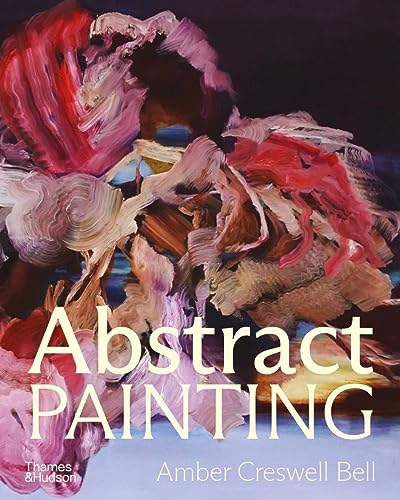Abstract Painting: Contemporary Painters

Amber Creswell Bell is back with a project similar in design to her previous book Still Life (2021). In Abstract Painting she follows the same approach by interviewing dozens of contemporary Australian artists (41 to be precise), learning what makes them tick creatively, and presenting a collective understanding of the genre at hand.
What is abstract art and how is it received in Australia? Why would an artist choose to work in the abstract? What processes are ideal for creativity and production? These are the questions that Creswell Bell brought to the artists and, as one might expect, the answers varied widely. If she had kept going, and interviewed 40 more artists in the same vein, there would have been another 40 unique responses. That is more or less the point of abstract art: it’s personal.
Often compared with improvisational jazz music or free form poetry, abstract art is a language unto itself. It’s a way to intuit and express an inner world for which all other forms of human expression fall short. It’s a way to wipe clean what we have been programmed to think, feel, respond and judge, and present alternatives. It’s a way to question all we thought we knew and reconsider. It’s an invitation to start over.
A teaser to the juicy discussion— abstract art is:
“The accidental merged with the decision-making.”
“Authenticity.”
“Endless possibilities.”
“Personal erudition.”
An art form that, “is not for followers.”
“A language, not a genre.”
“Deceptively simple and inherently complex.”
“Total freedom.”
“The medium of philosophy: it poses more questions than answers.”
Something that, “Defines whatever it wants itself to be.”
“The constant need to be brave.”
“Unknowable: as soon as it’s known, it ceases to be abstract.”
“What the artist and the viewer share.”
“An invitation to participate in a new world.”
Each artist is given six or eight pages to articulate what means the most to them about abstract art and relay a bit of their working style. Their paintings speak so beautifully to their unique interpretations, interests, and approaches. Examples of their work are given their fair share of attention with full color images bursting off the pages.
At a minimum, Abstract Painting seeks to increase awareness that this genre is alive and kicking in Australia, with plenty of artists dedicating their life to its practice and pursuit. It helps fill in the gaps of knowledge, which seem to be deeper than figurative art and representation. “You don’t have to understand it to appreciate it, but you might appreciate it if you understood it.” And Creswell Bell is doing her share to build dialogue, connection, relatability, and understanding.
Her work in the arts goes beyond this book however, and one might conclude that she is motivated by the sense that, “If abstract art is misunderstood it’s because art of all forms is misunderstood.” Her career accomplishments demonstrate her desire to promote artists and keep art moving forward. While being a bridge, or a translator, between artists and the public, there is only so much that can be taught.
Eventually, the goal is for people to arrive at their own appreciation of and connection to art and make it personal to themselves. The intrinsic worth of pieces they interact with will be readily apparent. At its fullest potential, Abstract Painting will guide the reader to the common denominator that will be, well, an abstract concept; moving them to fully understand Georges Braque’s point when he said, “There is only one valuable thing in art: the thing you cannot explain.” In other words, Abstract Painting helps explain what can be understood about abstract art so that it does not any longer need to be understood.